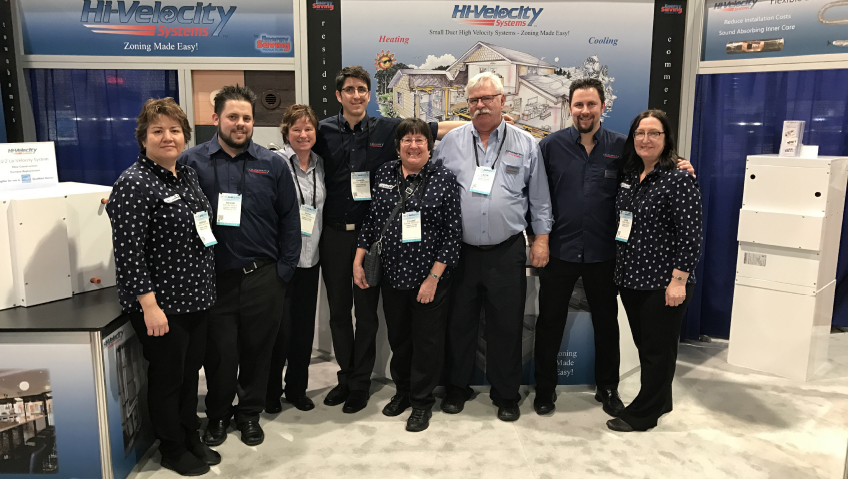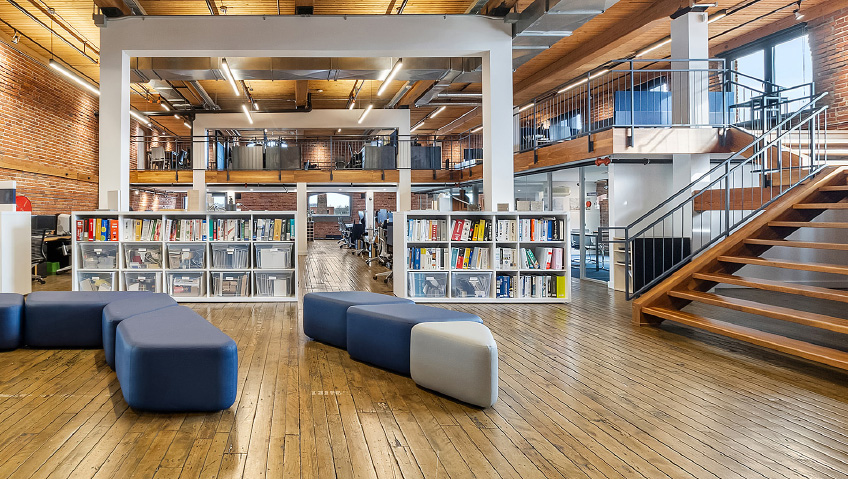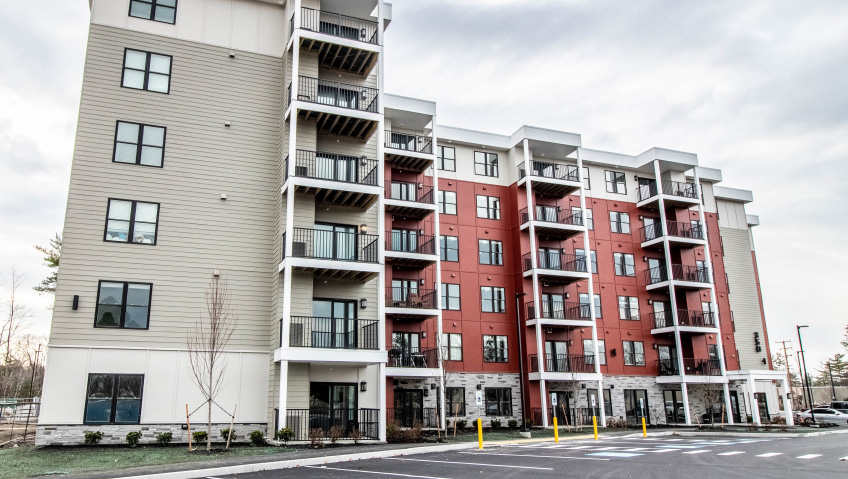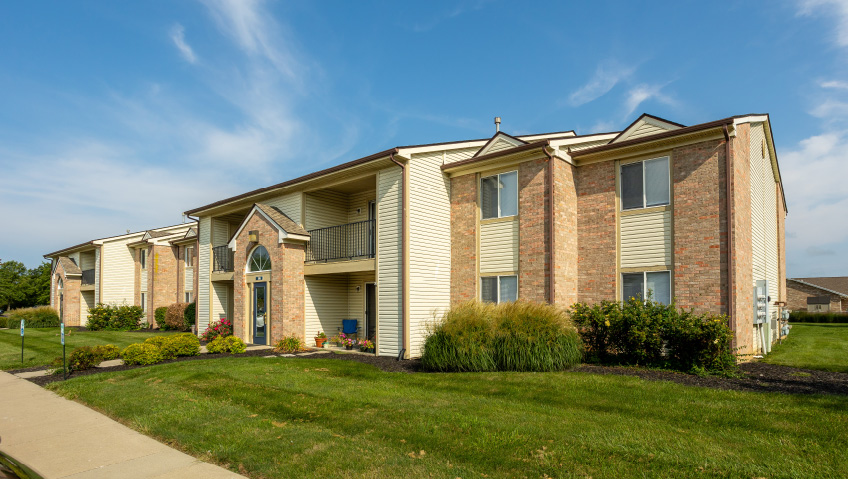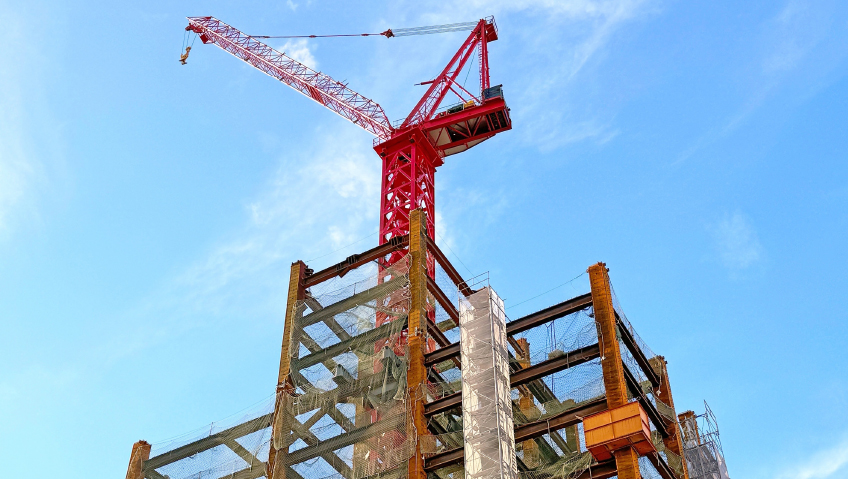Typically, HVAC systems use large ductwork requiring bulkheads and soffits, often spelling death for interior design aesthetics. Energy Saving Products Ltd. is challenging this. And for good measure, the company is overcoming shortcomings in air quality and economics while it’s at it.
We are talking to Tim Prevost, Executive Director of Business Development at Energy Saving Products Ltd. (ESP), the company behind Hi-Velocity Systems™. Over the years, the company has closely monitored and analyzed the evolution of air delivery systems in the heating, ventilation, and air-conditioning industry, but has boldly gone its own way.
Prevost explains that the norm in HVAC systems is that a centralized furnace forces air through the system, which invariably results in spaces furthest away from the heat source – such as second or third floors – receiving much less air.
Another disadvantage of regular HVAC is the dust produced, which has become an even greater issue during lengthy COVID lockdowns.
“We are only as healthy as the air that we breathe,” Prevost says. “And now, more than ever, we are being asked to spend more time in our homes.” As a result, and going beyond the norm for HVAC, Energy Saving Products has developed its own advanced system offering superior heating and cooling while drastically improving indoor air quality (IAQ).
Compact and energy-efficient, a Hi-Velocity system can also be installed more quickly than conventional systems and fits in areas traditional ducts cannot reach. Energy-smart motors with variable frequency drives are quiet, highly efficient, and save clients money on their heating bills.
Best of all, Hi-Velocity delivers air under greater pressure than regular systems provide, which eliminates hot and cold spots in homes.
Proudly family-owned
Tim Prevost grew up with the family business. His parents, Leon and Elaine Prevost founded the company in 1983.
Leon Prevost had spotted a gap in the market, after a spell working for another business selling heating and cooling products. Sharing a bent for engineering, Leon and his brother-in-law Dave set to work making air handlers in Leon’s garage, creating competitive systems focusing on energy efficiency and improved air quality.
Tim was born the next year, and so has seen the company grow from a garage-based business to its current manufacturing facility in Edmonton, Alberta.
“That place was known to my brother and me as ‘the shop’ and not the garage,” he says, with some nostalgia. “We would spend inordinate amounts of time there with our uncles and our dad, smashing hammers and drilling screws into wood, and trying to participate however we could.” The boys spent days off from school, as often as not, on the production line.
Expanding to a warehouse around 1990, the company purchased its first building about a decade later. Destroyed by fire in 2009, the structure was soon rebuilt on the same site, a testament to the company’s resilience and dedication.
Today, with a staff of between 15 and 20 – some with the company for 30 years – the role Energy Saving Products’ workers continue playing in its success cannot be overestimated, says Prevost. “Our staff is extremely important to us. Being a family company, we try to instil a family type of environment here,” he says.
With production line workers, order desk and sales, an engineering design team, and a research and development facility working on energy efficiencies, ESP emphasizes creating opportunities for the personal growth of employees.
It seems quite typical that their main designer, Bill, came from the shipping department and is today considered one of the world’s best Hi-Velocity duct designers.
Unique technology
In its second-generation, Energy Saving Products Ltd. has seen Tim and his brother Daniel, director of operations, taking over in a time of transition for the company.
Focusing on the North American market for years, ESP is now seeing considerable growth in other locations, including Europe, China, and Australia. “It’s a lot of international business that has kept us going through the years, and taken us to the next level,” says Prevost.
There’s no doubt that an important driver of the company’s booming sales is the industry-leading technology in the systems it makes.
Unlike traditional products – which struggle to heat and cool distant areas of houses – Hi-Velocity Systems utilize smaller ductwork, moves air more effectively, and eliminates cold and dead air spots. This is achieved through clever utilization of the Venturi Effect and Bernoulli’s Principle, where flow accelerates and pressure drops as tube diameter is reduced. It means that higher-pressure air is drawn to lower-pressure areas.
In this system, as air leaves a Hi-Velocity outlet, it displaces the molecules around that outlet, creating a low-pressure zone. This helps the air move much more efficiently and less air is needed, which saves energy.
“Air quality for me has been the Number One selling point of this product,” says Prevost. “I feel this is a life-changing technology for a lot of people in new home construction – having a system that actually moves air instead of having traditional ‘lazy air’ that just dumps air into the space, hoping that it does what it must do.”
Another unique aspect of the company’s systems is efficient energy use. Typical heating and cooling systems are set to a certain temperature via a thermostat. To meet that temperature, fans on furnaces and air conditioners start and stop intermittently.
Instead of this old-fashioned method of heating and cooling, ESP uses energy-efficient motors and variable frequency drive (VFD) technology, resulting in some of the lowest wattage per cubic foot per minute (CFM) that’s been attained worldwide. Rather than stopping and starting, the fans achieve improved efficiency by running continuously at a low speed, just the opposite of most systems.
“With how low our watts per CFM is, you’re actually saving money by running constant fan, which keeps the thermostat satisfied longer than it would otherwise,” says Prevost. “And by running constant fan, you are using your filter or air purification 24/7, instead of 10 minutes out of the hour if you’re reliant on heating and cooling calls to heat or cool the air in your home. That’s a big focus of how we educate our customers – running constant fan on a low fan speed for energy efficiency and major air quality benefits.”
For customers, running the fan constantly consumes only 50W of energy, about what it takes to power a single light bulb. Independent tests performed by Natural Gas Technologies in Québec showed 20 percent energy savings versus using an intermittent fan based on heating and cooling. And along with that comes much improved indoor air quality.
Building the future
The Hi-Velocity Systems made by ESP have not gone unnoticed by the likes of home builder Landmark, the Net-Zero Council of Canada, and the Canadian Home Builders’ Association (CHBA).
Over the past decade, the company’s products – found mainly in large high-end homes up to 50,000 square feet – have become economical enough for use in new home construction. In 2018, well-known Landmark Homes switched over to exclusively installing Hi-Velocity Systems in every property it builds. Creating a new builders series product line that doesn’t sacrifice quality, the company can meet the budgets of builders for their new row housing or condominium projects, which benefit from small duct systems.
As a sponsor and member of the Net-Zero Council of Canada, ESP is a leader in significant technological changes happening within the building industry.
Due to the shift in how we consume energy, Natural Resources Canada wants to have Net-Zero as a part of new construction codes by 2030, a goal that is fast becoming attainable with improved technology and better access to solar production products for builders.
Houses will not only be more energy efficient but make ‘off the grid’-style living a part of city life, not just the reserve of life in the wilderness.
For ESP, being on the Council enables the manufacturer to understand intimately all requirements and the ins and outs of compliance, and to be part of conversations with builders about integrating new technologies.
“It’s a team-building exercise as opposed to a ‘thou shalt’ doctrine from the government and the building code industry, who sometimes just dumps things in our laps,” says Prevost. He believes this open dialogue with government and builders and manufacturers is greatly helping the company to ensure the federal government reaches its goal of constructing off-the-grid new homes by 2030.
The outstanding features and performance of ESP’s systems have inspired several copycats, but that’s where any comparison stops. Along with its unique systems, Energy Saving Products has also had a reputation for top-notch customer service since its earliest days.
Instead of putting calls on hold as happens with many large HVAC manufacturers, ESP answers every incoming call between 10 a.m. and 6:30 p.m. Eastern, Monday to Friday – another selling point for the business.
“Any of our customers will say one of the best things we offer is our technical support team,” comments Prevost. “We are on the phone daily with customers, helping them with everything from the conception of a project to the commissioning of a project.
“Everybody here, whether it’s R&D or the order desk, is trained in technical support, so we can speak personally with our customers whenever they call in.”
A key difference is the company’s supply chain. Where many manufacturers are still affected by a pandemic-related delay of parts from overseas, ESP, which uses local suppliers, has had no slowdowns.
While building its systems is a bigger challenge than before COVID, the company continues selling products internationally and domestically, proud of shipping many systems to China, instead of vice versa. “Being a Canadian-made air quality product is a huge selling feature for us over there,” says Prevost.

